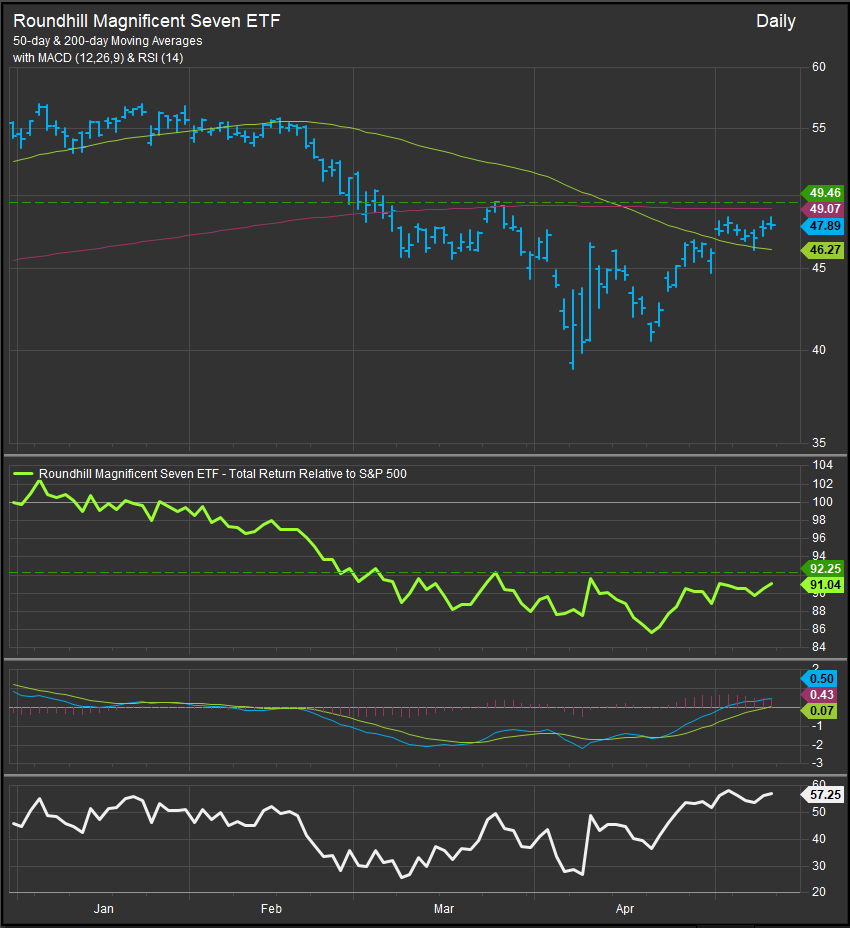May 11, 2025
We’re going to get a bit further into the weeds on Global trade negotiations in this week’s market letter. The dialogue has shifted from economic “saber-rattling” to a more constructive round of meetings focused on finding agreement and US equities have responded favorably as the calendar turns to May.
Global trade negotiations and regulatory developments remain key drivers in shaping sector performance in 2025. Trade headlines, notably the ongoing U.S.-China negotiations in Switzerland, suggest a move toward tariff de-escalation. Reports indicate that U.S. tariffs on Chinese imports, currently as high as 145%, could be reduced to 50-60%, contingent on Beijing easing export restrictions on rare earth materials. This potential thaw in relations has already contributed to a recovery in equities, with the S&P 500 regaining traction despite broader concerns about valuation metrics and persistent macroeconomic risks. Given the evolving nature and the broad impact of these policies across sectors, we wanted to take stock of what has occurred over the past months and what has been discounted in the price action.
Technology Sector: Regulatory Adjustments and Trade Dependencies
The technology sector remains deeply intertwined with global trade, particularly concerning U.S.-China relations. Semiconductor firms like Nvidia and AMD are poised to benefit from improved access to China’s $50 billion AI chip market should export restrictions ease. Meanwhile, Taiwan Semiconductor Manufacturing (TSM) reported a nearly 50% jump in April revenue, highlighting robust demand despite geopolitical uncertainties. In response to U.S. restrictions, Nvidia is set to release an updated H20 chip to maintain its presence in China, emphasizing the balancing act between compliance and market access. However, the European Union’s Digital Markets Act (DMA) poses regulatory challenges for tech giants, mandating more transparency and limiting certain monetization strategies. We expect these developments to have a material impact on Mag7 stocks as well as Semiconductors. Proxies for both themes have been discounted to intermediate support and the charts will offer clues to how investors are discounting these developments.
The Mag7 (chart below) has rallied into near-term resistance at the $49 level as proxied by the Roundhill Mag7 ETF (MAGS). We get a clear bullish reversal signal about that level.
The Philadelphia Semiconductors Index (SOX) is in a similar position to the MAGS ETF. A move above 4747 is needed to confirm a technical bullish reversal.
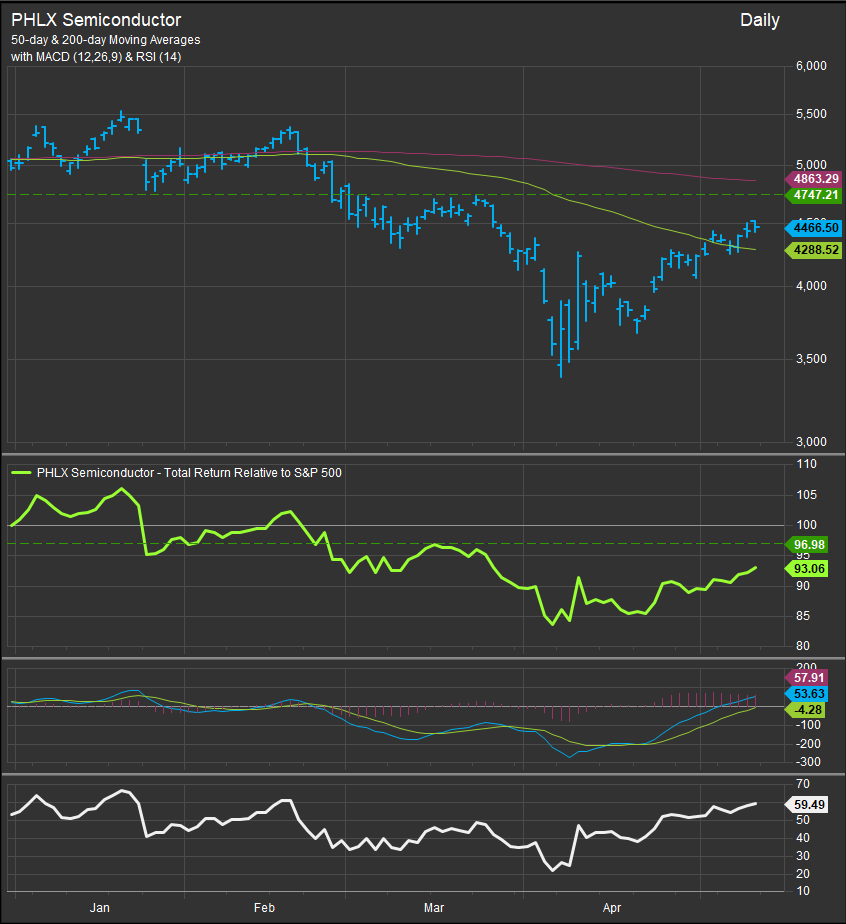
The NVDA chart looks very similar to the other two. Investors want these stocks to work. If the tariff dialogue can avoid any more grenades, this is shaping up as a constructive entry point on improving sentiment.
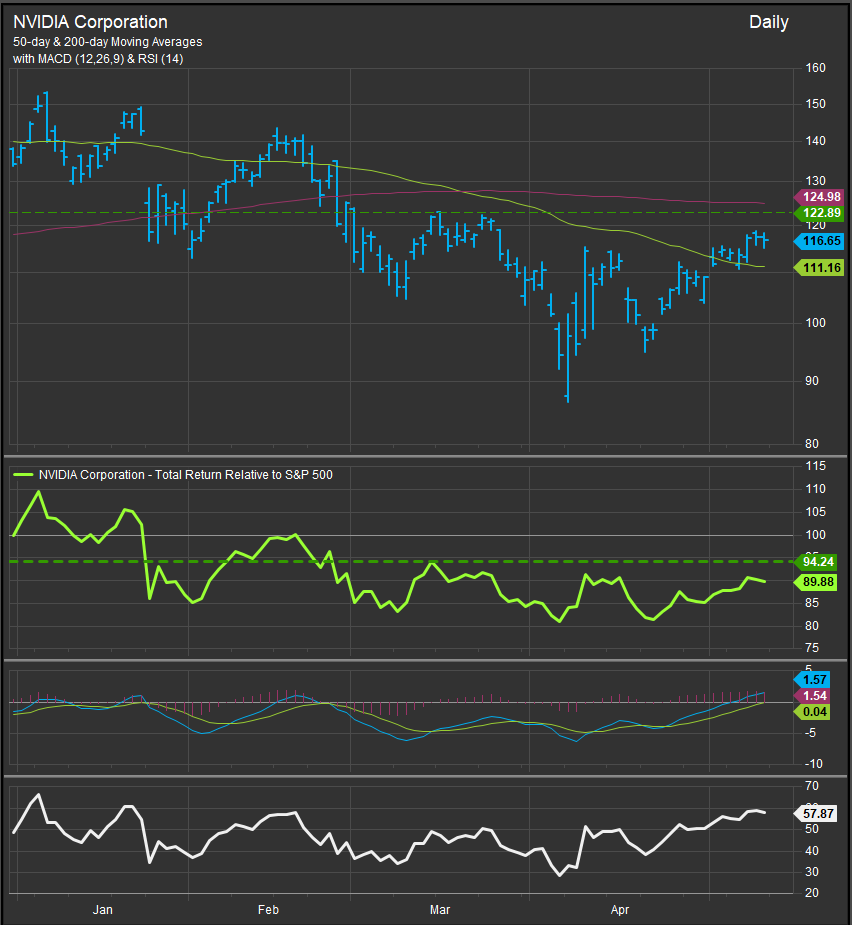
Industrial and Materials: Tariff Relief and Sector Dynamics
The industrial and materials sectors are well-positioned to capitalize on the potential easing of tariffs. Aerospace and automotive exporters, which contribute over $130 billion annually to U.S.-China trade, stand to benefit significantly from reduced barriers. Steel tariffs, recently reduced by 10% under the U.S.-UK agreement, have also provided relief to manufacturers.
Copper and aluminum markets, driven by rising demand and favorable trade conditions, emerged as strong performers this week, supporting the materials sector. However, steel companies underperformed due to pricing pressures and concerns over demand softness, particularly in the construction and infrastructure industries.
It is important to note while some tariffs have already been enacted, others are still “under investigation” as stipulated by Section 232 of the Trade expansion act of 1962.
Summary Table of U.S. Tariffs as of May 2025
| Product Category | Tariff Rate | Effective Date | Notes |
| Automobiles | 25% | April 3, 2025 | Applies to all imported automobiles |
| Auto Parts | 25% | May 3, 2025 | Exemptions for USMCA-compliant parts from Mexico and Canada |
| Steel Products | 25% | March 12, 2025 | Expanded to all countries; includes more downstream products |
| Copper Imports | Under Investigation | N/A | Section 232 investigation initiated; no tariffs imposed yet |
| Lumber Imports | Under Investigation | N/A | Section 232 investigation initiated; no tariffs imposed yet |
| Semiconductors | Under Investigation | N/A | Section 232 investigation initiated; no tariffs imposed yet |
Consumer Sectors: Spending Trends and Trade Challenges
Consumer Discretionary and Staples sectors reflect the complex interplay of inflation, spending trends, and global trade dynamics. With over 42% of U.S. apparel imports originating from China, tariff policies significantly influence retail performance. Companies like Toast, Inc. (TOST) managed to outperform due to innovative revenue streams in financial technology, despite macro pressures on the restaurant industry. Conversely, Sweetgreen (SG) and Home Improvement segments underperformed, underscoring consumer caution amid elevated prices. Apparel companies with global footprints have been hit hard as NKE continues to trend lower on price despite significant discounting over the past 2 years.
Energy Sector: Resilient Demand and Trade Opportunities
The energy sector has been buoyed by trade and geopolitical developments. WTI crude oil rose 1.8% on the day and 3.2% for the week, reflecting strong demand and OPEC+ production management. U.S. LNG exports to Europe and Asia remain a key growth driver, even as inflationary pressures challenge the broader industrial user base. The reduction of energy costs in trade negotiations could further support downstream sectors, amplifying the sector’s resilience. We continue to see stronger stock charts in the Oil and Gas Storage & Transport sub-industry while the broader energy sector remains under pressure. KMI (chart below) is an example. Its high dividend has been attractive amid periodic volatility.

Crude prices have come under pressure since the advent of the trade war. According to Reuters and the Wall Street Journal, in 2025, OPEC+ initiated a significant increase in oil production, marking a strategic shift from previous output cuts. Starting in May, the alliance, which includes OPEC members and key partners like Russia, agreed to boost production by 411,000 barrels per day (bpd), a move that accelerated the unwinding of earlier voluntary cuts totaling 2.2 million bpd. This increase was extended into June, bringing the combined output hike to nearly 1 million bpd over two months. The long-term crude chart shows a re-rate lower for Oil and we would expect that to be a headwind for the sector over the longer-term.
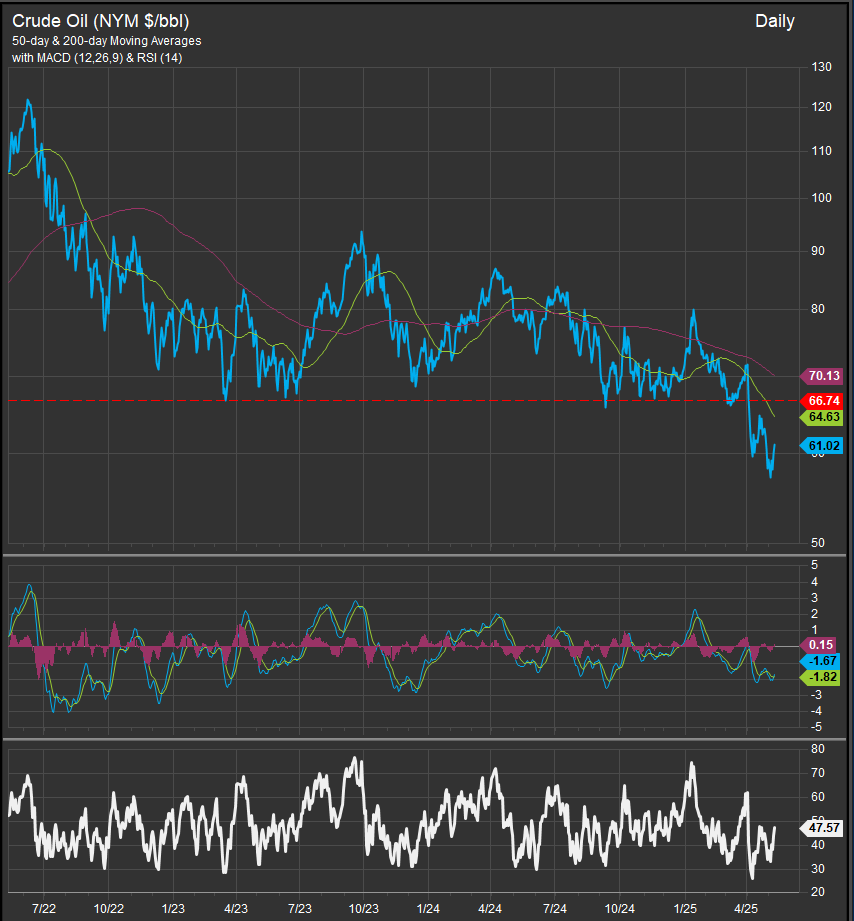
Healthcare and Pharmaceuticals: Navigating Regulatory Challenges
The healthcare and pharmaceutical sectors continue to navigate a challenging regulatory landscape. The EU’s stricter Medical Device Regulation (MDR) has raised compliance costs, as illustrated by Globus Medical (GMED), which lowered FY EPS guidance due to international disruptions and supply chain delays. Despite these challenges, companies like Insulet (PODD) have demonstrated growth, leveraging increased patient adoption and market expansion. Companies like TransMedics Group (TMDX), which announced a new manufacturing facility in Italy, illustrate the strategic moves by firms to diversify production and mitigate tariff impacts.
The XLV chart (below) has traded down through support at $136 and we could see a retest of $120 as the sector searches for a bottom.
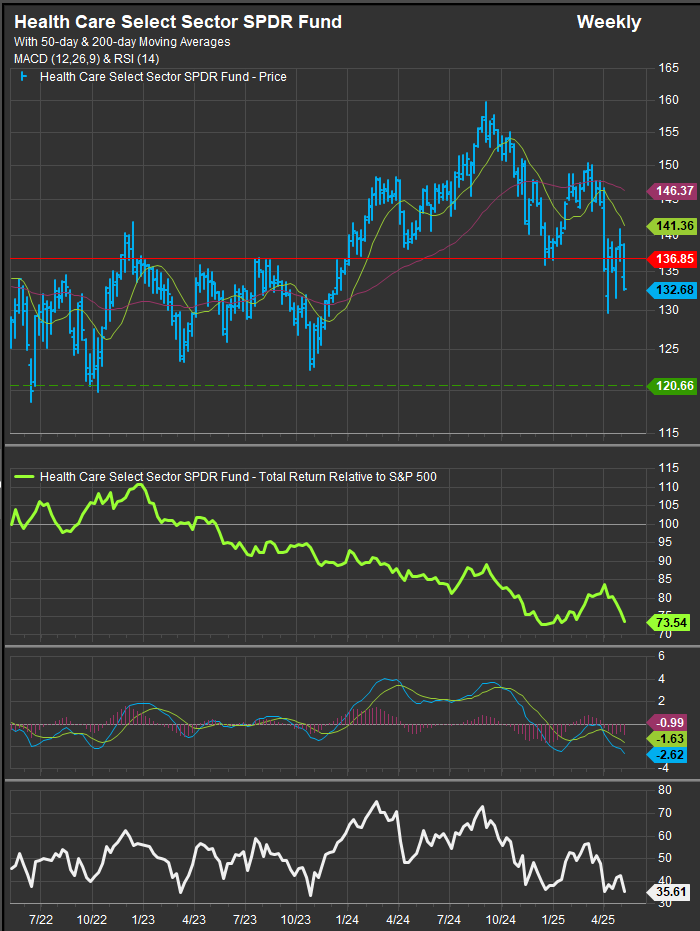
Economic Indicators and Broader Market Implications
Economic data and Fedspeak provide further context to the market’s response to global trade dynamics. Inflation concerns persist as tariffs contribute to supply chain disruptions and price volatility. The Federal Reserve remains cautious, emphasizing a “patient” approach while acknowledging potential growth slowdowns. Notably, Governor Barr flagged the inflationary impact of tariffs, and New York’s Williams projected slower economic growth in 2025, aligning with broader market sentiment. The dance between inflation and the Fed continues. Tariffs by their nature impose costs and raise prices, but they do so without consideration for the consumer of those goods. That forces investors to consider and potentially position for recessionary scenarios as well as inflationary ones. Those concomitant pressures align to keep interest rates in stasis, and we’ve seen that from the US 10yr yield, which has been volatile in the very short-term, but which has mainly been contained between 4.15-4.5% over the past 2 years (chart below). We’ve put a linear regression on the 3yr price chart to better show the long-term path of rates despite all the volatility around trade, inflation, AI and the Fed.
Our take-away is that inflation remains a concern, and we shouldn’t count on the Fed until the longer-term trajectory of interest rates is trending lower rather than higher.
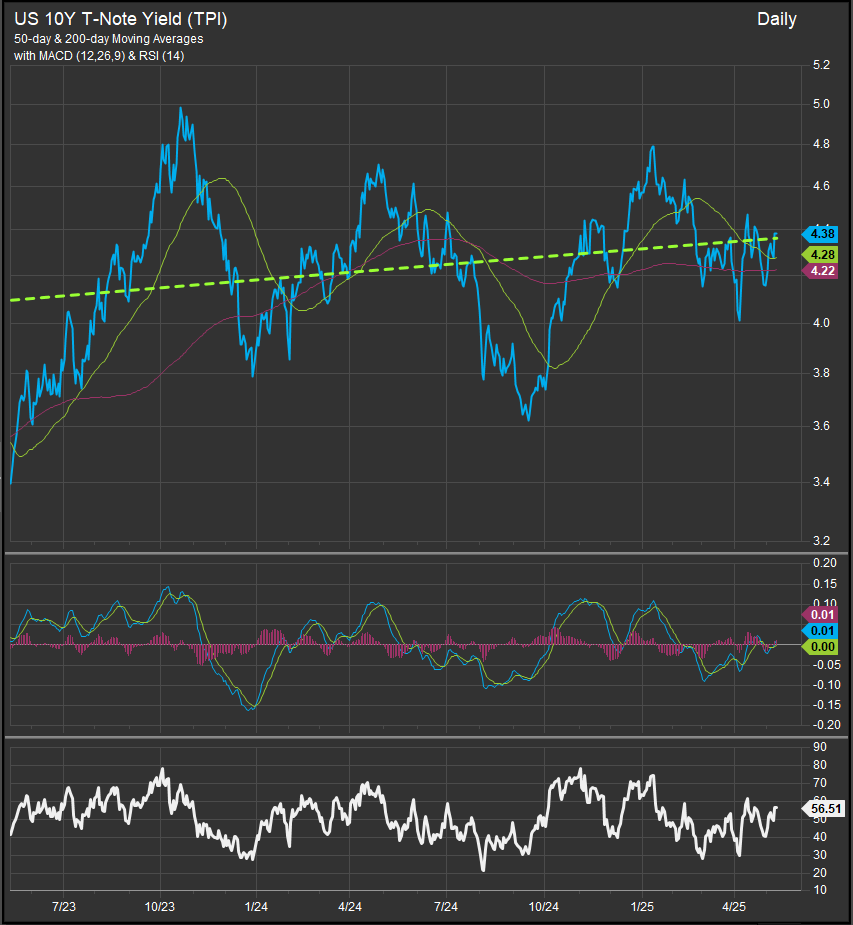
Conclusion
Global trade and international regulations continue to exert significant influence across sectors, shaping both opportunities and risks. The potential for U.S.-China tariff de-escalation provides a catalyst for improved market conditions, particularly for trade-sensitive industries like technology and industrials. From our perspective, a key pivot going forward is the direction of interest rates. If tariffs prove inflationary, that adds more pressure to the US consumer, and it potentially sidelines any dovish moves from the Fed.
Patrick Torbert, Editor & Chief Strategist, ETFSector.com
Data sourced from FactSet Research Systems Inc.

